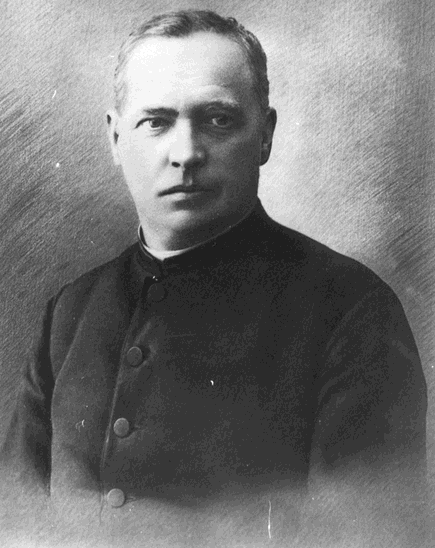Despite the ancient origins of the language, it is only recently that Euskara, or Basque, has received the academic and literary attention that other languages have enjoyed for a long time. Much of what led to the current growth and strength that the language enjoys today began over a century ago with, for example, the creation of the Euskaltzaindia — the Basque language academy — in 1919. The first head of the academy was Resurrección María de Azkue, who was once called by Basque scholar Antonio Tovar “the great witness of the popular traditions of the Basques.”

- Resurrección de Jesús María de las Nieves Azkue Aberasturi Barrundia Uribarri, or Azkue as he is commonly referred to, was born in 1864 in Lekeitio. His father, Eusebio María Dolores, was a poet and his mother, María del Carmen Aberásturi, was a living font of Basque expressions and idioms. As a result, Azkue grew up with a love of Euskara.
- Though his education started off with nautical studies in his native Lekeitio, he was called to a religious life, and though never actually practicing as a priest, he studied Philosophy and Theology in Vitoria and then Sacred Scripture and Canon Law in Salamanca. He eventually made his way to Brussels and Cologne to complete his studies in music.
- In 1888 the Bizkaia Provincial Council created a chair of Basque at the Bilbao Institute. Azkue won the position and held it until the outbreak of the Spanish Civil War in 1936. In 1918, the first Basque Studies Congress was held in Oñate, where the Euskaltzaindia was created. Soon, Azkue was elected President, a position he held until his death.
- Azkue’s impact on Basque studies and, more specifically, the Basque language cannot be overstated. He touched all aspects of Basque culture, from music and theater to religious literature and journalism. His four most important works are his Diccionario Vasco-Español-Francés, Cancionero Popular Vasco, Morfología Vasca, and Euskaleriaren Yakintza, the last of which is a compilation of Basque lore that spans four volumes and includes stories, folklore, customs, and sayings. (Is there an English translation?!?) Many of the proverbs in Jon Aske’s list are from Azkue’s book.
- Perhaps his greatest impact was on the language itself. He was a proponent of Gipuzkera Osatua, a kind of “complete” Basque in the Gipuzkoa dialect. His novels, including Ardi Galdua, were written in Gipuzkera Osatua. Gipuzkera Osatua can be viewed as a forerunner of Euskara Batua, the unified Basque that is now spoken widely in Euskal Herria.
- On October 14, 1951, Azkue fell into the Nervión river, in front of the Arriaga Theater. Drawn from the waters by a worker, he died weeks later on November 9, 1951.
Primary sources: Villasante Cortabitarte, Luis. Azkue Aberasturi, Resurrección María. Enciclopedia Auñamendi, 2020. Available at: http://aunamendi.eusko-ikaskuntza.eus/es/azkue-aberasturi-resurreccion-maria/ar-1368/; Wikipedia.
Discover more from Buber's Basque Page
Subscribe to get the latest posts sent to your email.


Ezkerrikasko!!